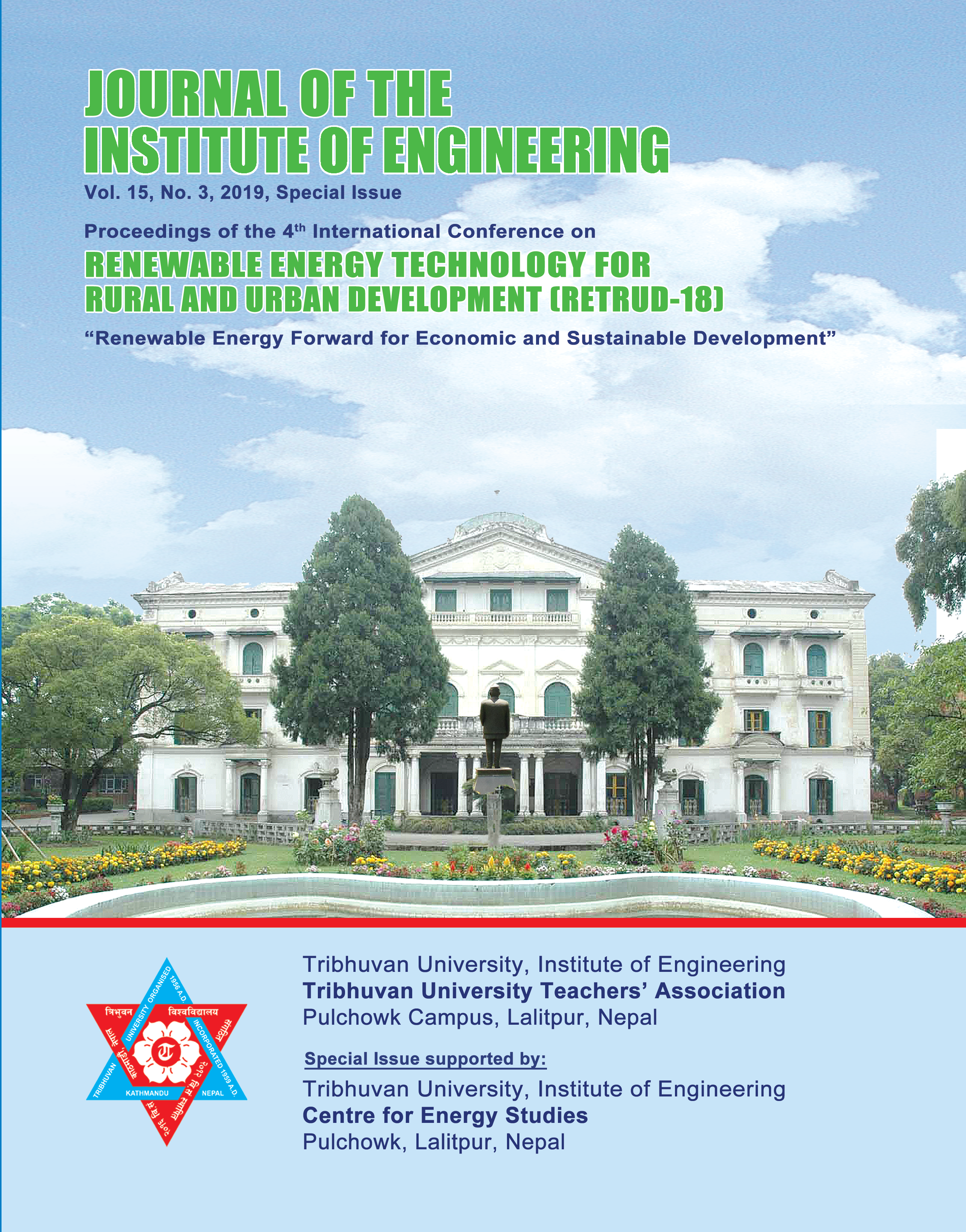Technical and Economic Assessment for the Promotion of Non- Carbonized Pellets in MSME Sector in Nepal
DOI:
https://doi.org/10.3126/jie.v15i3.32191Keywords:
MSMEs, Pellets, Specific Energy Consumption, Environmental Emissions, Economic PerformancesAbstract
Pellets are densified biomass fuel compatible for household as well as industrial use. Pellets can be potentially used as an alternative fuel source in many medium, small and micro enterprises (MSME) such as dairy, dyeing, laundry, khoa making, pickle making, yogurt making, soap making enterprises etc. in Nepal. Despite of the presence of large number of such industries and abundant biomass resources, production and application of pellets as a fuel source is almost non-existent in Nepal. Hence, to assess the benefits of using pellets as alternative fuel, an applied research of pellets application was carried out in a dyeing industry. Energy, environment and economic performances of the dyeing industry was compared between the baseline scenario of utilizing sawdust and wood chips mixture in loose form with that of non-carbonized pellets application as an alternative fuel. Results showed decrease in specific energy consumption by 6% on utilizing non-carbonized pellets compared to baseline. In terms of the environmental performance, emission of CO decreased from 100 Mg/L to 10 Mg/L and CO2 emission decreased from 7.5% to 4%. Similarly, suspended particulate matter (SPM) emission decreased from 37.4 mg/Nm3 to 14.8 mg/Nm3 but the negligible increment of NO2 emission was observed. However, emission of SO2 increased significantly from 3.3μgm/m3 to 33.7μgm/m3. High Sulphur content was found in the pellet which could be from the lubrication used in the pellet machine, but this could not be confirmed. The economic analysis revealed that the energy cost was almost twice with pellet application which was mainly because of the higher cost of imported pellets. If the production could be initiated in Nepal, utilizing the abundantly available local biomass resources, the cost could be considerably lowered thus making use of such fuel economically feasible.
Downloads
Downloads
Published
How to Cite
Issue
Section
License
The Copyright is held by Journal of the Institute of Engineering, IOE, TU




